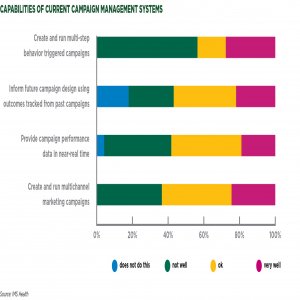Local Stevia Developer Optimistic About Market
STORY INLINE POST
Sugar addictive properties are well studied and can be witnessed by the continued rise in the profits of soft drink companies in the face of growing awareness about the health risks of sugar consumption,. Unfortunately, while such factors have slowly begun to result in a decrease in sugar consumption worldwide, the US and Mexico are lagging behind. Stevia now accounts for 40% of the global sweetener market but it still does not have a captive market in Mexico.
One Mexican start-up is aiming to change this trend. Stevia Bonda, based in Guadalajara, is basing its future on convincing Mexicans of the value of this plant. “Stevia does not cause cavities, leaves a sweet aftertaste and a feeling of satiation, and is safe for use by diabetics and pregnant women. By only processing it with maltodextrin and dextrose to reduce its bitter aftertaste, we also ensure our products have zero calories,” explains Grecia Flores, General Manager of Stevia Bonda. Although most food products use quantities of stevia that are too small to have a health impact, Stevia Bonda sells the plant in its raw form through the Stevia Rústica product line, allowing it to conserve its therapeutic qualities.
Beyond being healthier than sugar, Flores advocates for stevia’s widespread use in the food industry due to the potential it presents for financial savings. “Stevia is used in far lower quantities than sugar. While its cost is slightly higher than that of sugar, food companies will save in storage and transportation costs by only needing to store kilos of stevia instead of tonnes of sugar.” To cater to this growing market, Stevia Bonda has a product line that specifically targets the food industry. Food companies need very pure and concentrated extracts, meaning that Stevia Bond only adds bulking agents used to reduce bitterness.
According to Flores, no other brands produce specific stevia products for the food industry but despite this lack of competition, getting a foot in the door proved difficult. “Selling our products is not easy as some companies are more interested in securing low prices than in providing quality products. In supermarkets, Stevia Bonda products cost an average of US$0.30 more than the competition,” she explains. Nevertheless, she believes the company’s quality control process justifies the higher cost. “The raw material, stevia extract, is becoming more expensive. Therefore, I wonder if our cheaper competitors are compromising quality to reduce production costs. Many unregulated products are entering the market, which may be dangerous for consumers.”
Despite these challenges and thanks to a growing interest in nutrition among the Mexican public, the market for stevia in the country has grown rapidly in the last two years. Stevia Bonda’s sachets can now be found on the shelves of supermarket chains like Superama, Waldo’s, and Comercial Mexicana, if only in the states of Colima, Jalisco, Michoacan, and Sinaloa. Flores attributes this growth to several factor. “Our products would previously only be recommended by nutritionists at a time when many people were even unaware of the basic concepts of nutrition, let alone about stevia,” she explains. Another early problem was the slightly bitter taste of the pure plant, Stevia rebaudiana. Promotion campaigns in recent years have however resulted in a more captive general public
Flores is now encouraging Mexico to take the next step in growing as a stevia market: become a producer. For the moment, her company imports raw materials and prepares the mixtures itself as Mexico does not have enough stevia crops to serve its needs. With the market dominated by the likes of China and Thailand, she feels that Mexico has the potential to be a major producer and exporter of stevia. “In recent years, farmers have suffered from low prices, creating interest in producing more expensive products. They now want us to become potential buyers so they can ask for subsidies from the government to plant stevia.
The government is currently evaluating the situation and, should plans move ahead, we will be in a strong position to establish our own processing plant after acquiring the right machinery,” she explains. Another advantage is that, despite the US restrictions, exports would be easy as few countries are so severe on the commercialization of stevia. “We do not use stevia processed to 97% as it brings about only a small difference in flavor but a major increase in processing costs. We sell 90% processed Stevia, which is slightly more sour but equally safe. This means we would be able to sell to Europe and South America where there are no regulations for the sale of Stevia,” she concludes.























